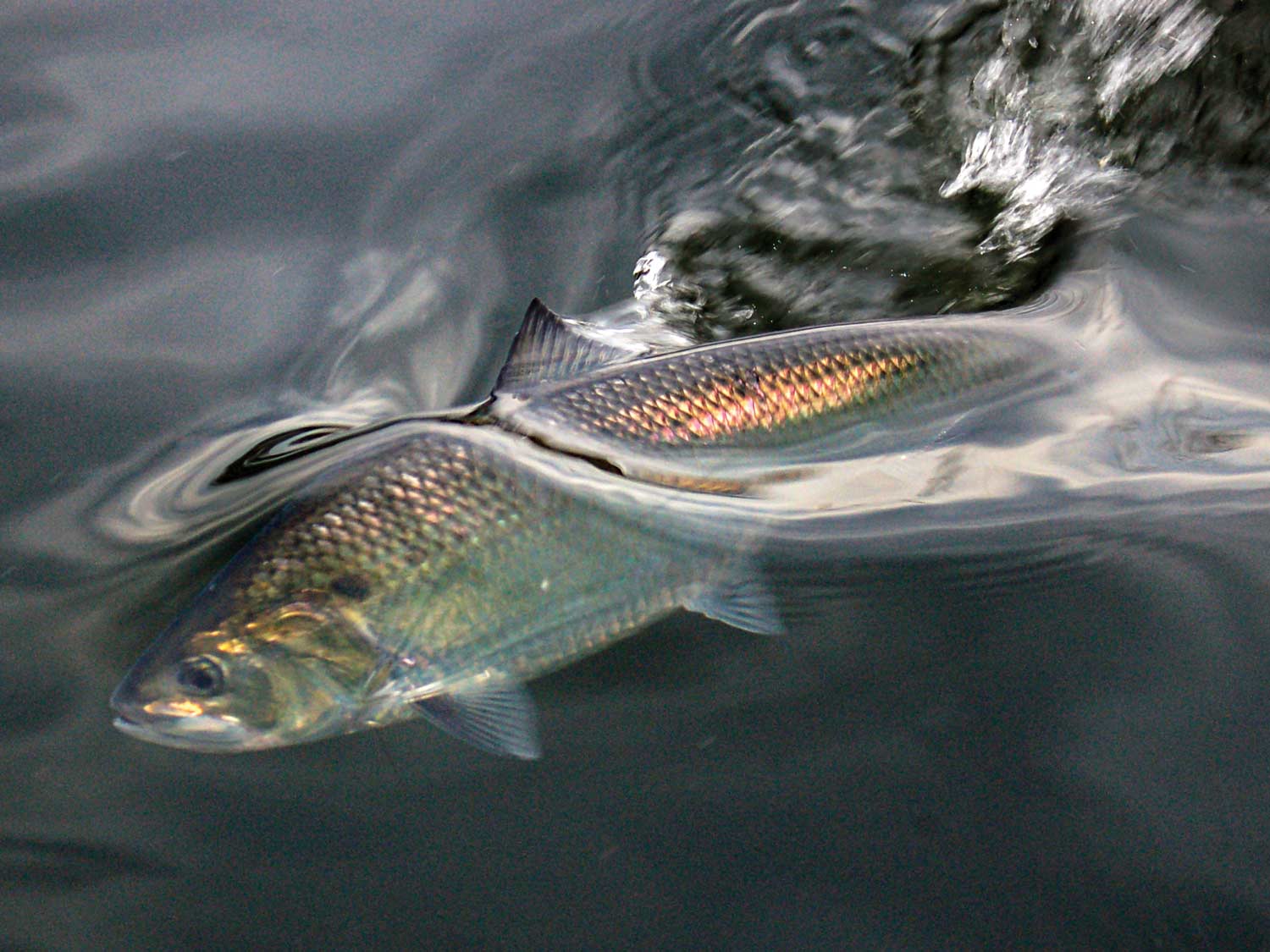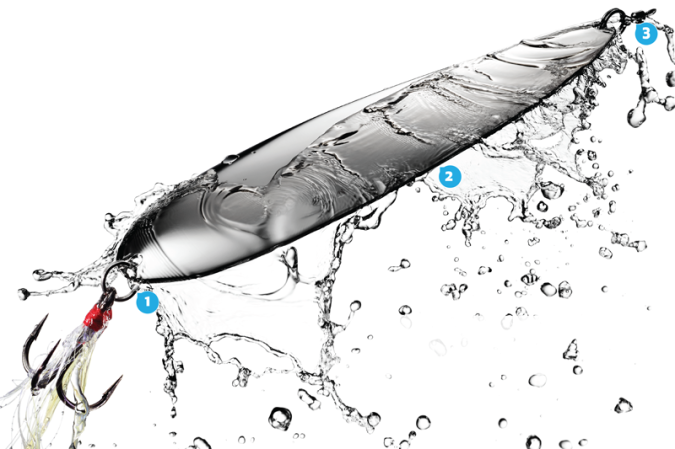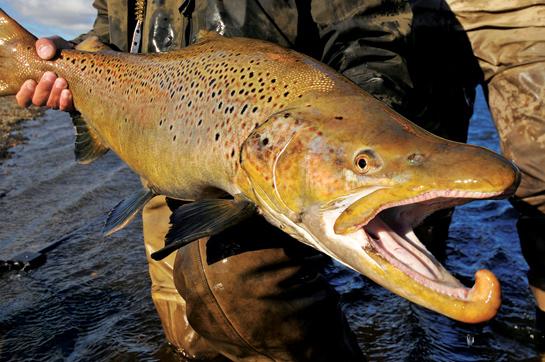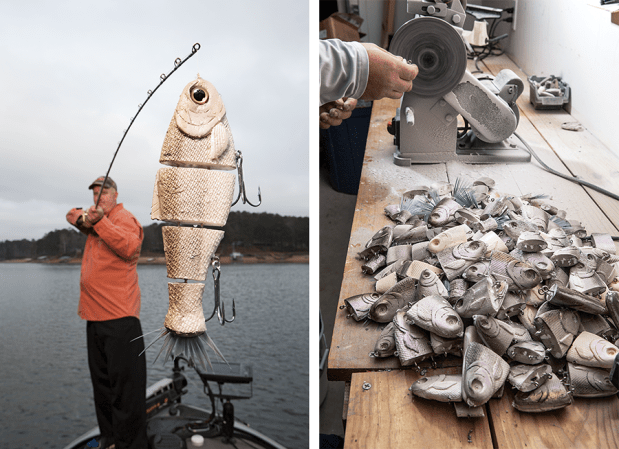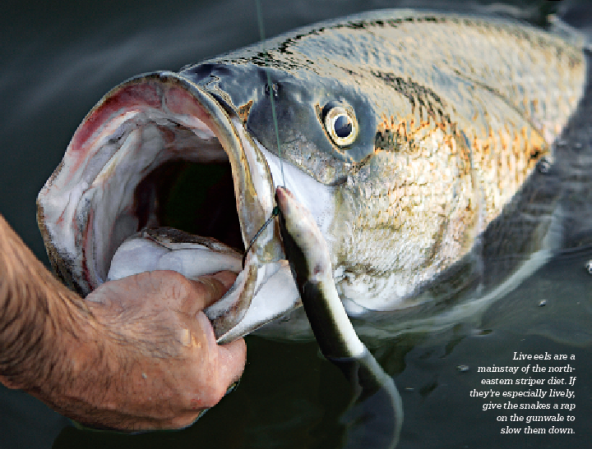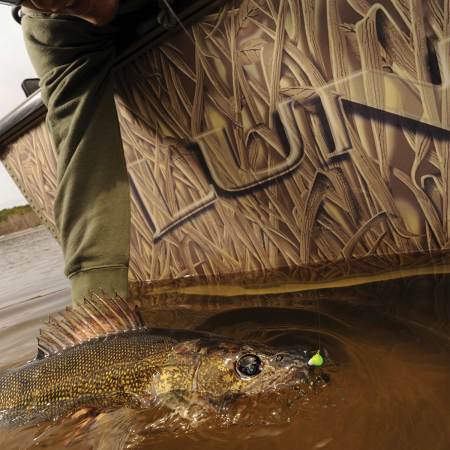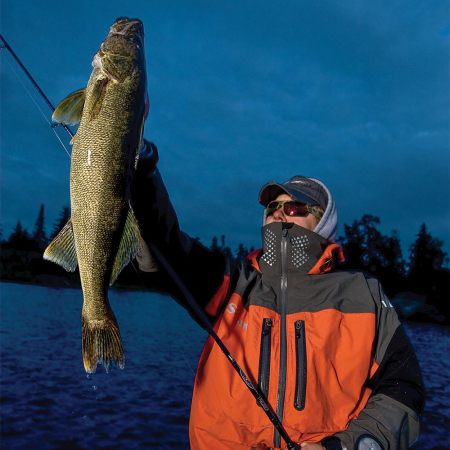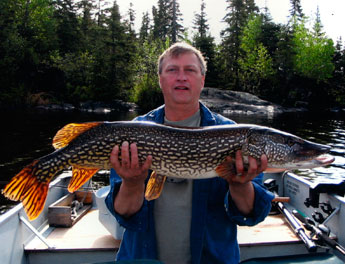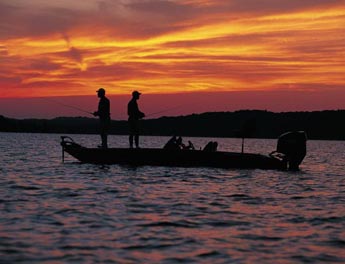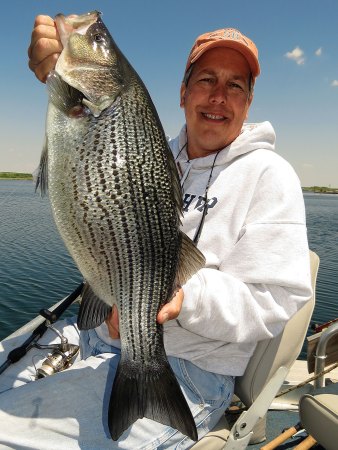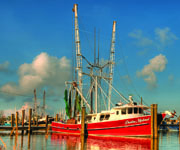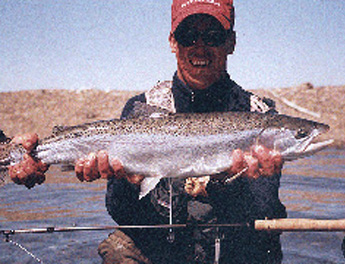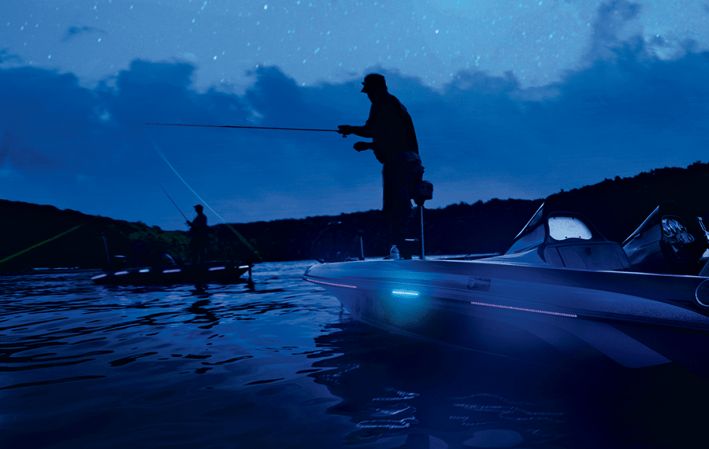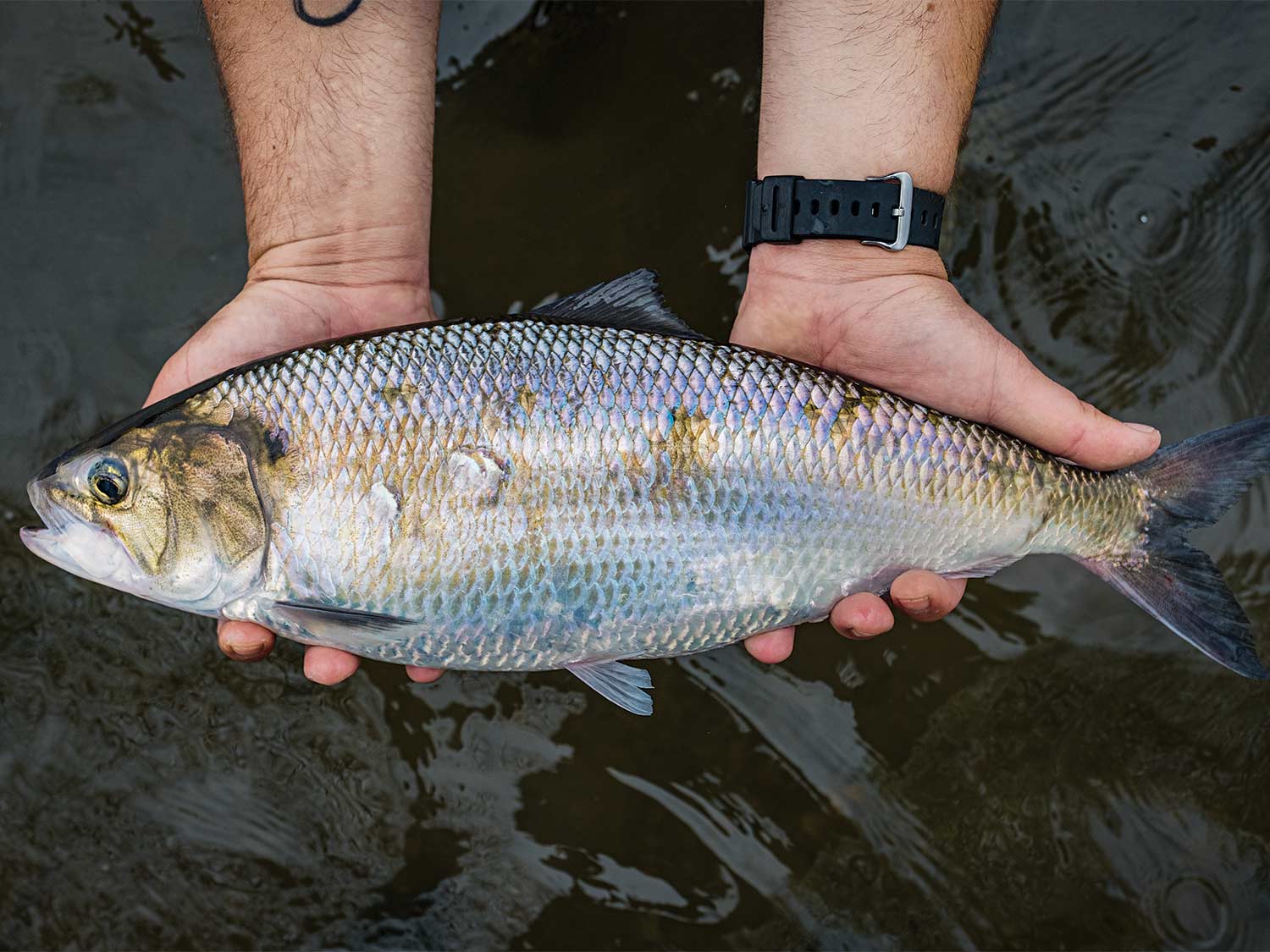
I had to be tall enough to wear hip boots. That was the rule, and from the time I was 4 until my 8-year-old legs met the criteria, that rule really pissed me off. I’d sit on the basement steps while my dad gathered his tackle. He’d unclip his heavy rubber chest waders from the pipe on the ceiling. He’d zip his box of shad darts into one pocket of his fishing vest and a few packs of True menthols into the other. The next morning, he and his buddies would make their annual run to the Delaware Water Gap. It was only 63 miles north of where I grew up in Trenton, New Jersey, but to me, it was worlds away—a mythic place reserved for the men.
The river was too deep and cold and strong in April, Dad would say. The fish fight too hard. You’re just not ready. But each time I was left behind to pout with the Thunder Cats and Pee-wee Herman, my infatuation with American shad strengthened. Thirty-odd years later, it’s stronger than a flying elbow drop from “Macho Man” Randy Savage. A kid’s love for a fish doesn’t go much further than his ability to catch it, but with maturity comes an appreciation for it being one of the most historically significant species in the United States, swimming in one of the most historically significant rivers. I’m lucky to be able to call that river my home water, and even luckier to be part of a fishing culture that was almost lost.
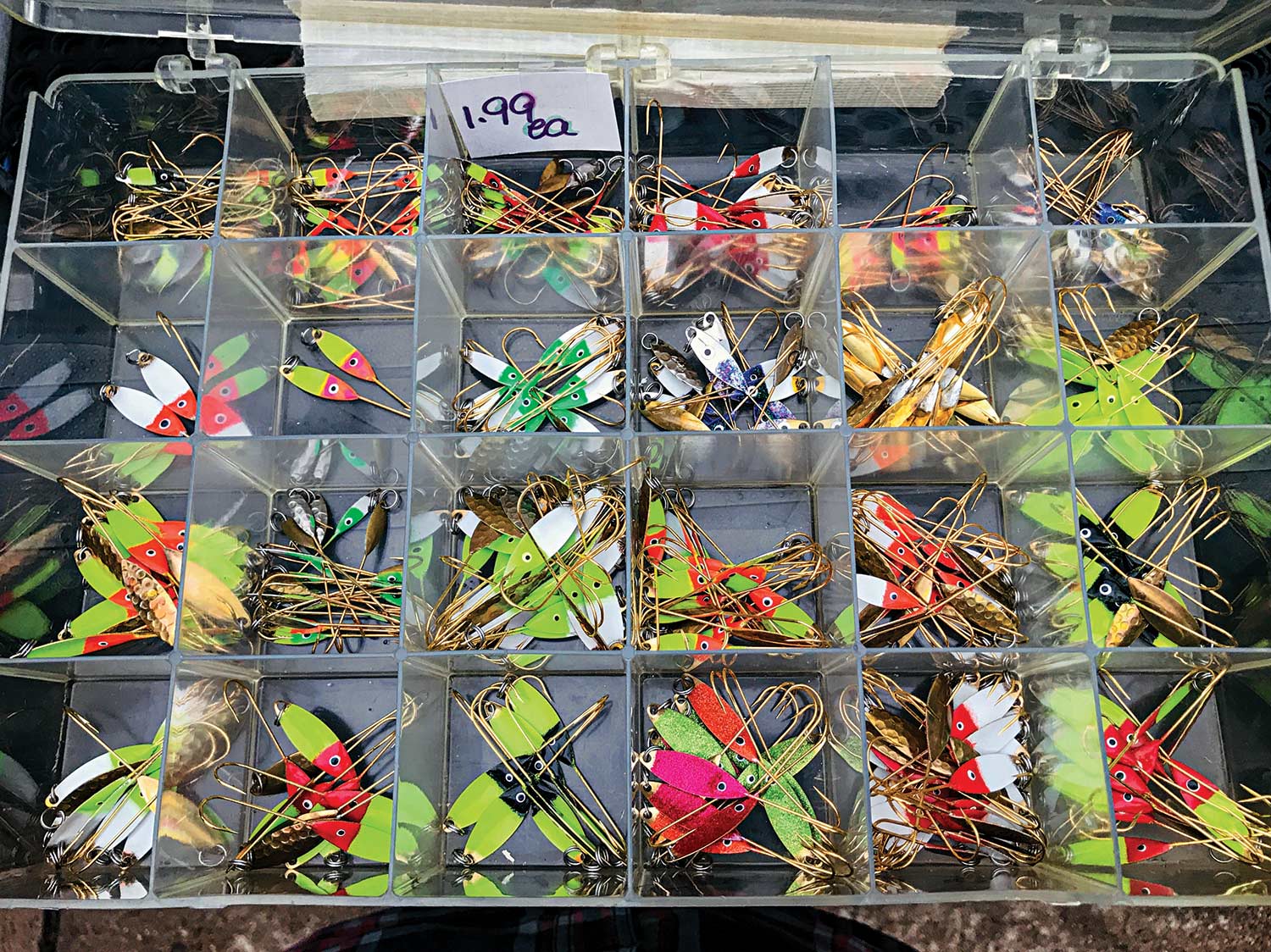
Freedom Fighters
To most anglers, shad are bait. Hack off a gizzard’s head, soak it on the bottom, and you might end up with a 50-pound blue cat. Slow-troll a lively threadfin behind a planer board, and it might get smashed by a fat landlocked striper. The American shad, however, transcends a means to an end; it’s the end result. Females—called “roes”—average 3 to 5 pounds in the Delaware River but commonly push 7 or 8. The world record taken in the Connecticut River in 1986 broke the 11-pound mark.
For some (though not me, thanks), the payout is slow-baked shad, or shad roe sacks pan-fried in butter, both of which are considered delicacies. For most, it’s just about the fight. Fresh from the Atlantic and charging upstream against the swollen currents of spring, shad—like salmon—are on a mission to spawn. Stop that progress by sticking a shad dart or flutter spoon in a big roe’s face, and she gets mad. She’ll turn her wide body broadside and catch the flow, making a light spinning reel sizzle. She has a paper-thin mouth, so your drag better be loose, and your rod better not be too stout. She’ll change direction on a dime, zipping upriver so fast that you struggle to stay tight. You’ll also have to survive the jumps that earned her the nickname “Jersey tarpon.”
I’m not the only angler who needs that first shad battle of the year to instantly cure months of winter depression. The calendar is irrelevant; it’s the arrival of these fish that tell us spring is here. Some years, our spring might not come until early April. Others, it starts the first week of March. Mother Nature makes that call, but luckily for every single American enjoying his or her freedom, she called it right in 1778, saving us from a lot more than cabin fever.
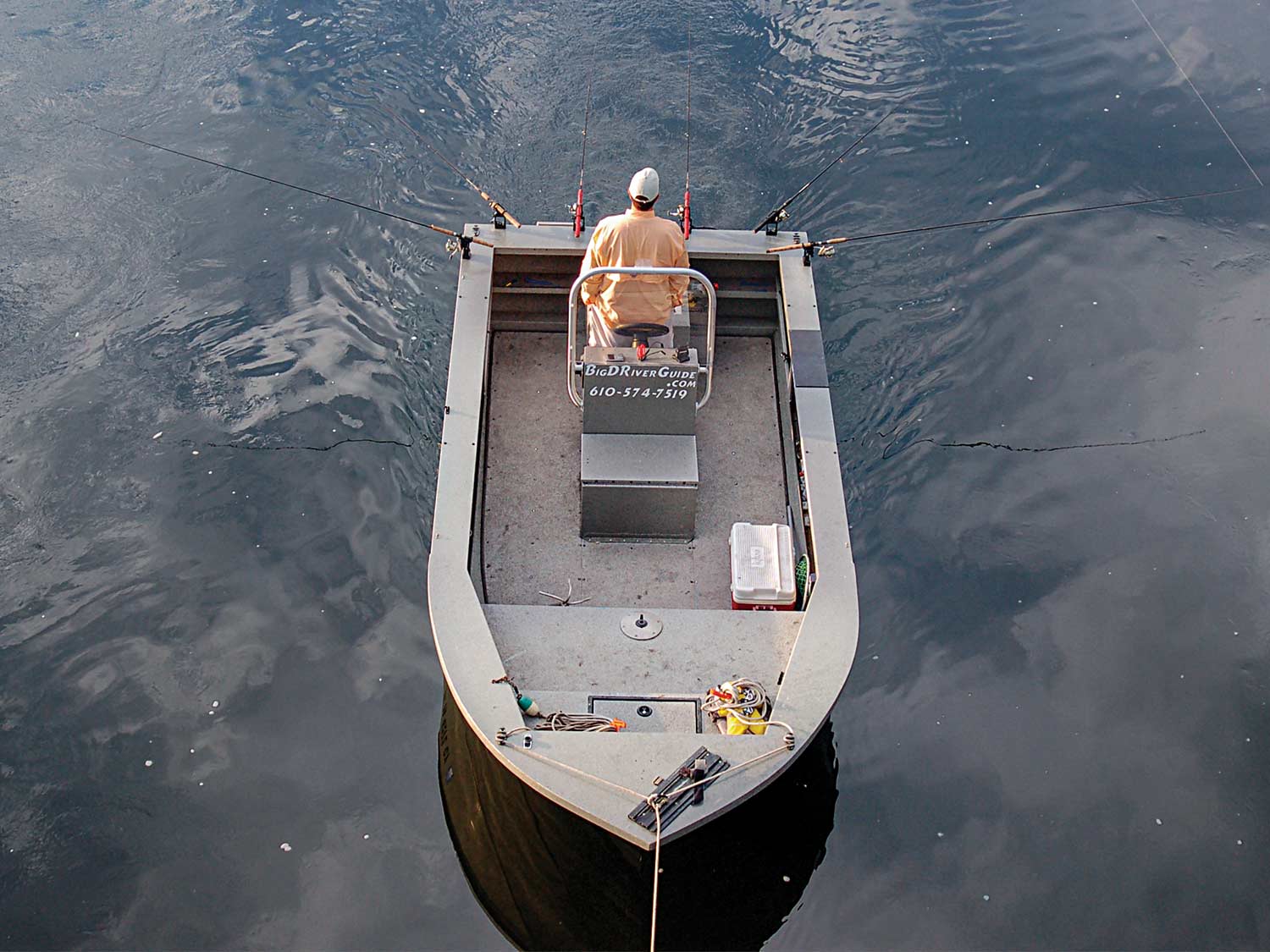
That winter, General George Washington and his army were camped at Valley Forge in Pennsylvania. They were starving to death, and the general would frequently be seen on his knees praying for salvation. It seems that God—or maybe the fish gods, depending on your beliefs—heard him. In his book, The Washington Hypothesis, author Timothy Ballard writes: “Suddenly, in the midst of the winter famine, there was an unexpected warming of the weather, too early to accredit to springtime. The ‘false spring’ tricked the shad fish into beginning their run up the Delaware River early.”
Many of the shad that flooded into the Delaware at that time made a hard left up the Schuylkill River at Philadelphia, which ran right through Washington’s camp at Valley Forge, 20 miles northwest. Not only did they feed and rejuvenate the beleaguered soldiers, but the fish were so abundant that they were salted in barrels and continued providing the sustenance that the army needed in the coming months to defeat the redcoats in New Jersey at Monmouth Courthouse. Monmouth wasn’t the final battle of the Revolutionary War, but without the shad, it’s a battle that may not have happened. Today, Valley Forge is a hotspot for history buffs. The shad, on the other hand, don’t visit like they used to.
American shad are native from northern Florida through Nova Scotia. Any river that meets the ocean within that range has—or had—an annual spring run to some degree. In Washington’s time, all of those rivers probably teemed. Now the Delaware is the undisputed king of shad both for numbers and size for one simple reason—it’s the last major river on the East Coast with no dams on its main stem, providing the fish 300 miles of open water. That’s not to say there aren’t other good shad rivers in New England and into the Southeast, but the prime fishing usually stops at the first dam, most of which were built for flood control. Some were constructed much earlier, when mills and foundries gobbled riverside real estate during the Industrial Revolution.
Combine the lack of access to upstream spawning grounds with years of commercial fishing taking a toll on the shad as they staged just offshore, and there are many rivers that have no quantifiable run at all anymore. The Schuylkill push that saved George Washington would now have to circumvent three dams to reach the camp at Valley Forge. All of these dams have fish ladders, and while those work in theory, the reality is they can’t let enough fish through for the Schuylkill to maintain even a fraction of its historical shad run. Meanwhile, in the Delaware, just a few short miles below the Schuylkill’s first dam, the spring run of American shad is as strong as ever.
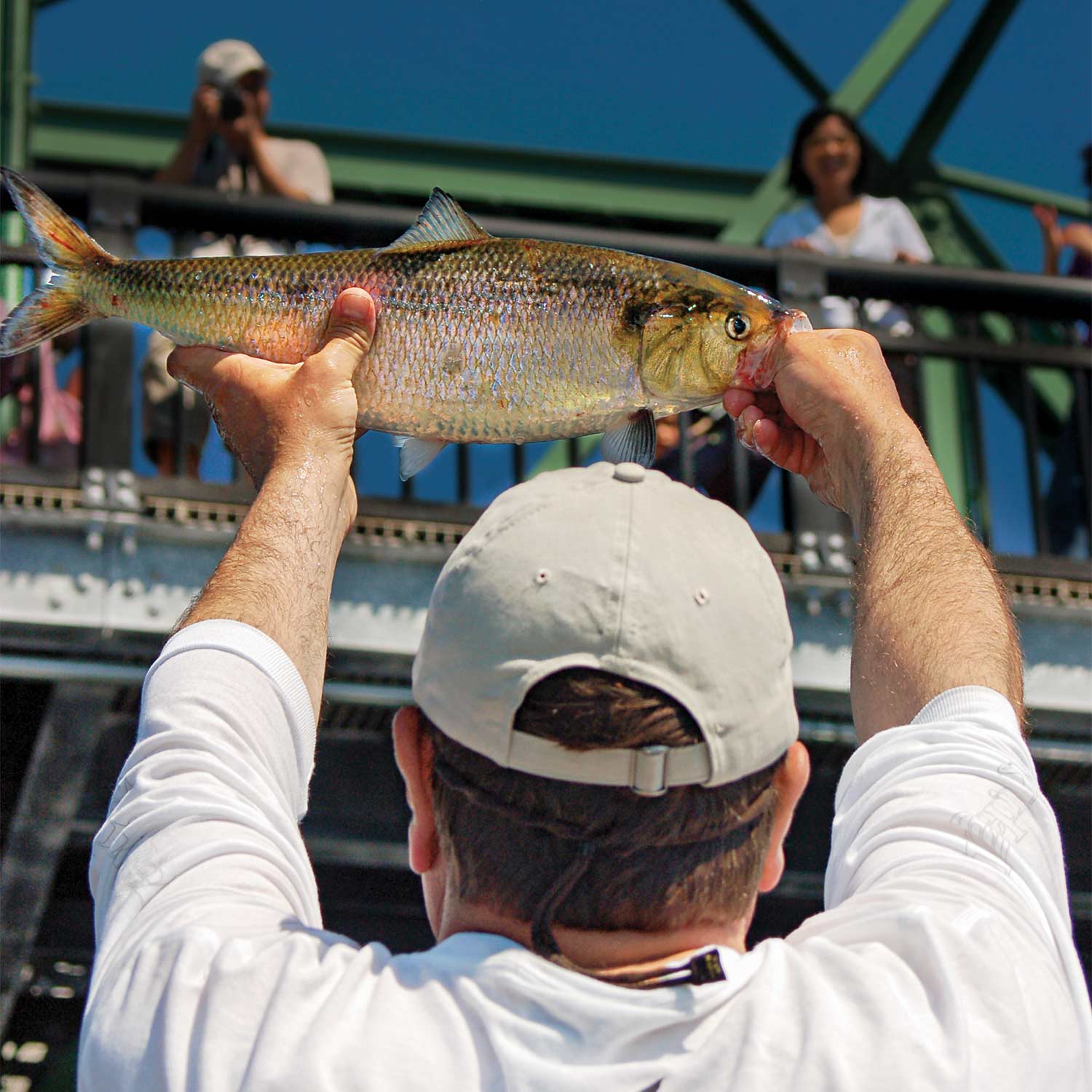
Life of the Party
The parking lot at Worthington State Forest was jammed with trucks. Fishermen from all walks of life nipped at flasks, smoked cigarettes, and filled the quiet woods near the Delaware Water Gap with clouds of profanity. As Dad and I walked the trail to the river—getting the first scuffs of dirt on my shiny new hip boots—I noticed there was barely an open piece of shoreline. Hundreds of anglers flanked the Delaware, and many of them were fighting fish. As an 8-year-old, I was intimidated because this wasn’t a trip to the pond where the only person to judge my goofs was the old man. I was about to join the lineup. I was about to become a shad fisherman. We wedged in between an angler chest-deep in the water casting a fly rod and another in sweatpants and sneakers standing on a boulder at the river’s edge. “Cast at an angle upstream as far as you can and just reel slowly,” Dad told me. I winged the little red-and-white shad dart—essentially, a lead jighead with a slanted face and a pinch of bucktail—and started to crank. Midway through the sweep, the rod loaded. For the first time in my life, I’d hooked a fish that engaged the drag, albeit for only a few seconds before it pulled free, and I welled up with grief. Fly-rod guy shouted, “Hey, it’s OK, buddy. You’ll get another one!” Sweatpants guy came tight. “Come over and reel this one in!” he yelled.
I felt like I was in. By the end of the day, I’d beached at least a dozen of my own shad and a dozen more hooked by my dad, his friends, and strangers. It was like a big fishing party, one that I couldn’t wait to attend the following year and every year after that. Unfortunately, despite a couple of good bashes immediately following my initiation run, the parties got lamer and lamer. We hooked fewer fish. There were fewer guys on the river, until finally, when I was 14, my dad’s Explorer was the only truck in the lot when we arrived. That alone told us we weren’t going to catch any fish, and after that year, our shad fishing went on hiatus. We certainly weren’t the only ones feeling bummed.
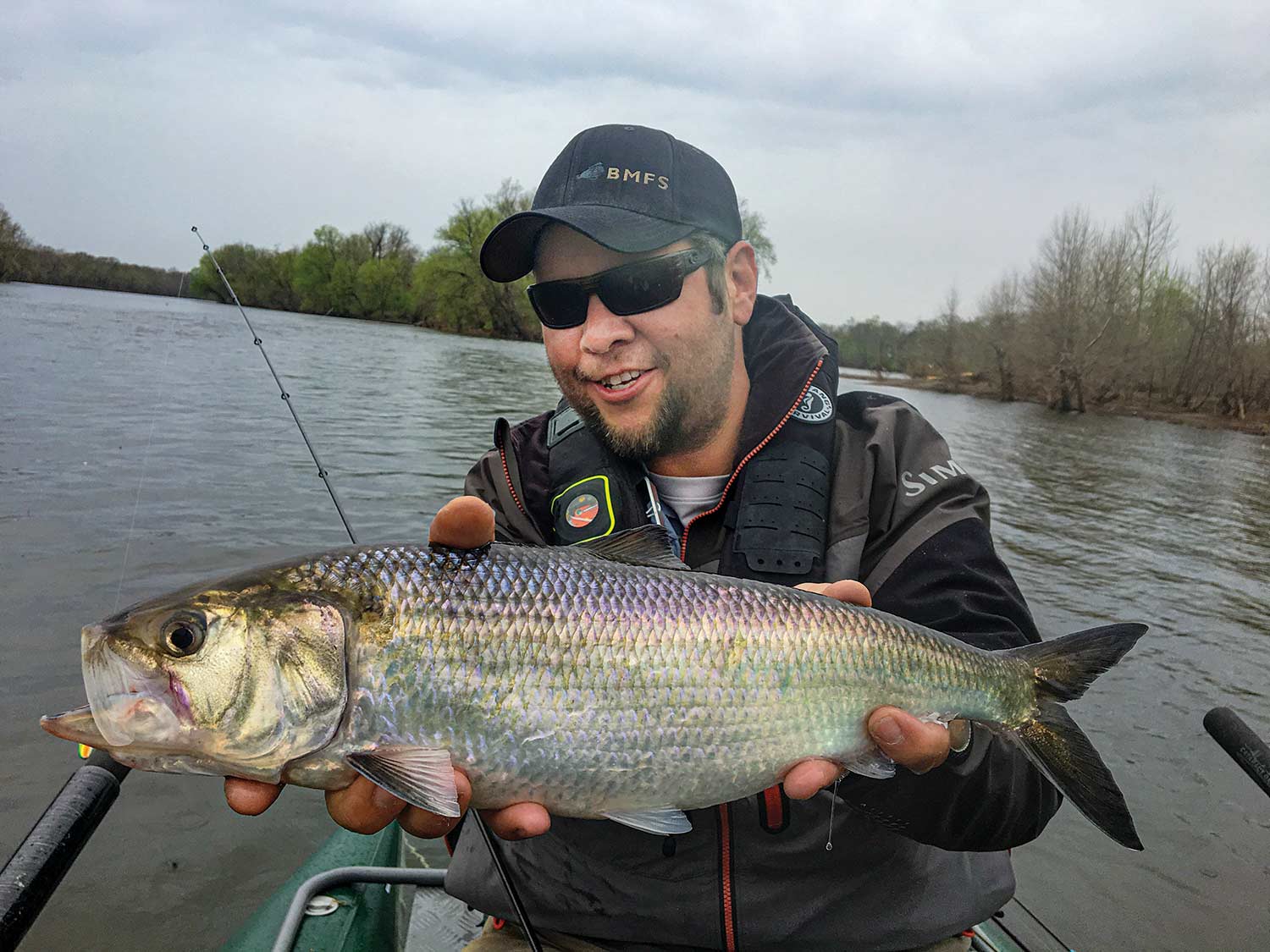
“There were some really tough years in the mid-’90s,” says Capt. Dieter Scheel. “I remember seasons where if we came back to the ramp having caught three to five shad, we were happy. That was a good day.”
Nobody can definitively pinpoint a cause for the downswing during that era, but there are suspicions. One of Scheel’s theories is that striped bass bounced back, and shad provided a hell of a food source. There were also some notable high-water springs that simply made it harder to get on the river or target the fish effectively. And some anglers just fell back on the stock answer during rough periods: It’s cyclical.
Scheel has been fishing the Delaware for more than 30 years, and he’s known as a shad maestro. The funny thing is, earning that reputation has zero to do with figuring out what the fish want to eat, because the answer is nothing. In salt water, American shad filter-feed on plankton. Once they enter fresh water, they don’t feed at all. Similar to salmon, they snap at darts, spoons, and flashy flies out of pure annoyance. The real skill is figuring out which underwater paths the shad follow as they move upriver, and then positioning yourself where the most fish will bump headfirst into your offerings. Scheel has his spots so dialed that I’ve had 50-fish days with him while boats anchored 40 feet to our left and right struggled to break double digits. He operates around Lambertville, New Jersey, which is on the southern stretch of the Delaware much closer to where I live, and the first time I fished with him was in 2008. In a few hours, we had racked up 33 shad. I remember that number because Scheel keeps a tally counter on board, and he never forgets to click it when a fish hits the net. The fast action rekindled my fire for the species, and while I didn’t realize it yet, I had jumped back into the game right at the beginning of a major upswing, one that we’re still experiencing today. Just as no one knows exactly why shad numbers dropped, no one is completely certain why they’re booming again, but the boost is helping to revitalize the scene. The Bi-State Shad Fishing Contest, which started in 2011 with 48 entrants, had more than 1,000 entrants in 2019. The guy that landed the heaviest shad during the three-day riverwide event walked away with a check for $20,000. It’s hard to deny that social media has played a positive role in the uptick in shad anglers. It’s the only fishery I know of where the sharing of information doesn’t really get hackles up. Specific spots are less critical than simply knowing the strength of the run in a certain stretch. It’s also kind of impossible to pressure shad into lockjaw because they don’t stay put during their migration. You’re angling for fresh fish in any given location on a daily basis.
Striking Home
The fact that I had been introduced to American shad when I was young but hadn’t caught one in so long made that day with Scheel in April 2008 extra satisfying. But the gaps between the highs of the early ’90s and early 2000s left a hole in the culture for a while.
“Most of the guys I fished with in the early ’90s are all gone,” Scheel says. “These are the people I learned from. They grew up fishing for shad to eat, and they were a pretty closed group. So, what happened was that any new fisherman that wanted to get into shad in the mid-’90s struggled. They didn’t have anyone to show them. You kind of had a whole generation of anglers who didn’t learn it, so for a while it seemed like shad fishing was becoming a lost art.”
According to Scheel, in his early days, it wasn’t uncommon to see 80 or more boats anchored below the bridge in Lambertville on a Saturday during the run. Now if there are 25 boats, he considers it crowded. There are still some gathering points for shore-based anglers that see strong traffic, but it’s not quite like it used to be, mostly because the people fishing them are primarily locals.
“We live in a culture of instant gratification,” Scheel says. “People want to catch fish right now. They aren’t willing to drive three or four hours, so you don’t have people coming from far away to shad fish anymore. The days of the banks being lined for a mile are over. The guys you’ll see way up north at classic spots with fly rods and ultralight tackle now are generally 50 or older.”
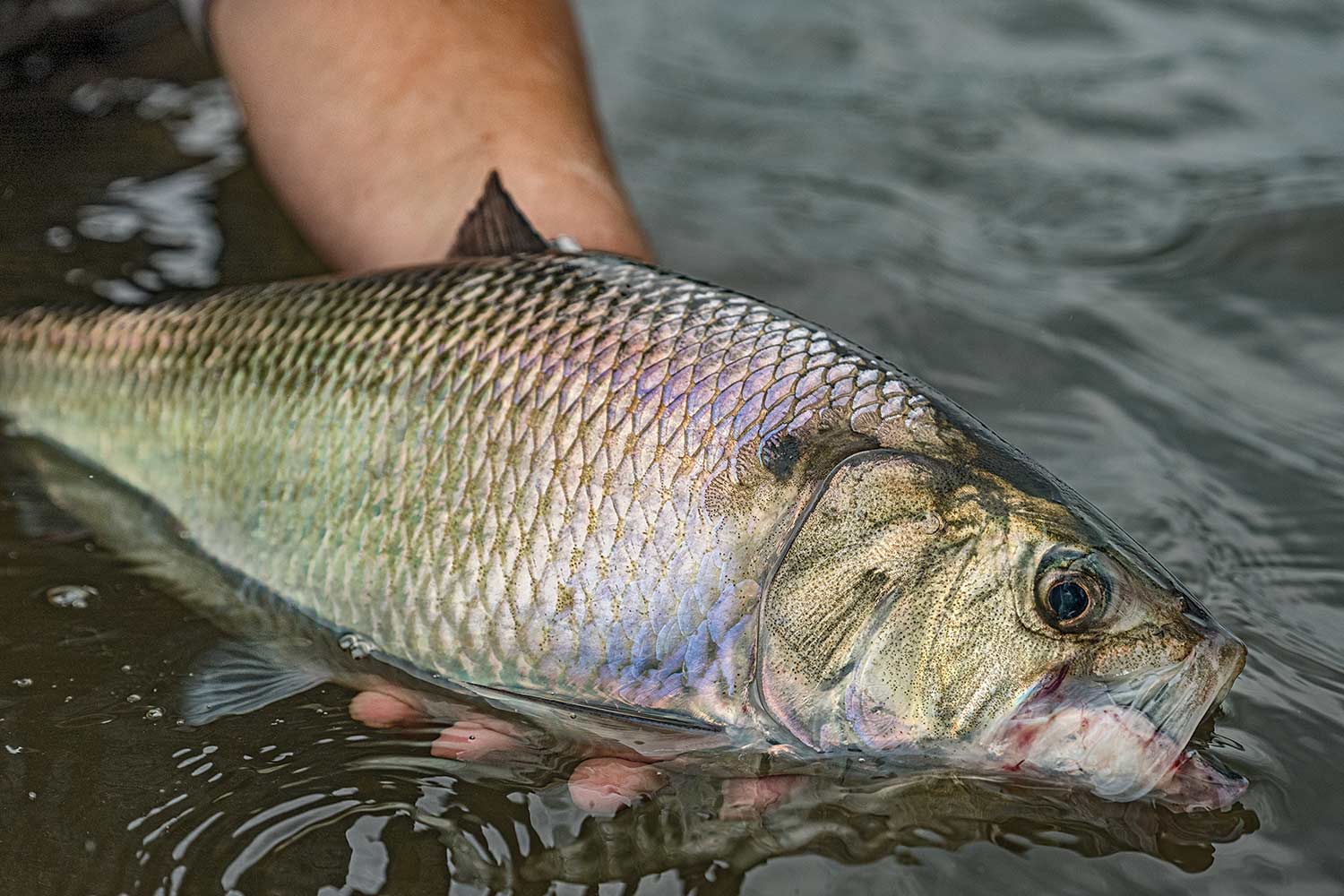
I’d be remiss if I didn’t admit that I’ve not done my part to keep the old-school shad parties raging either. I can kind of blame Scheel for that, but in a good way. A big reason why so many anglers like Dad and me trucked to the Water Gap was that the river narrows there, increasing the odds that a bank fisherman’s dart will get in shad faces. Dad never bothered fishing the river close to home because it’s much wider, more difficult to read, and, frankly, less scenic. But Scheel opened my eyes to boat fishing for shad on the lower Delaware. I could pick his brain about deciphering that underwater road map. He taught me things like increasing the width of your spread by using 11-foot steelhead rods, and rigging spoons on a leader behind hook-free crankbaits to get them down in the current behind the anchored boat. Within the next few years, I got a river-worthy vessel. I figured out my own milk run of shad lanes on the section of the Delaware right down the street. Instant gratification. Why would Dad and I drive two hours north? The shad are just as plentiful and tenacious at home, and now I’m the one who gets to put him on the fish.
Read Next: A Wild Fish Returns to the Musconetcong River
By Memorial Day weekend, the run is history, leaving only dead, spawned-out shad in its wake. During those precious weeks, I’ll get out as much as I can, or at least as much as the river lets me. On the best days, you can’t set out more than two rods because between you and a buddy, you don’t have enough hands to deal with triple or quadruple knockdowns. You’ll bust each other’s balls over lost fish, or when extra-feisty ones run around the anchor rope. You’ll ream each other in good fun when lines get crossed. Somewhere in the midst of the chaos, you might even crack a cold beer or two.
You’d have to tone it all down with a little kid on the boat or, as I realize now, with one at your heels wading the Delaware Water Gap. But my 5-year-old daughter, already a bluegill and pickerel slayer, is itching to graduate. Last spring, every time I hitched up to head to the river, she wanted to come along. In truth, neither of us was really ready for that, but she’s lucky her old man has a boat, because she won’t have to wait for her little legs to grow. This will be the spring that I’ll let her in.

